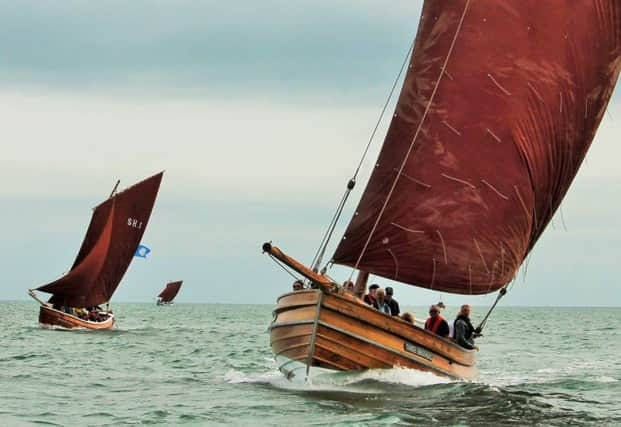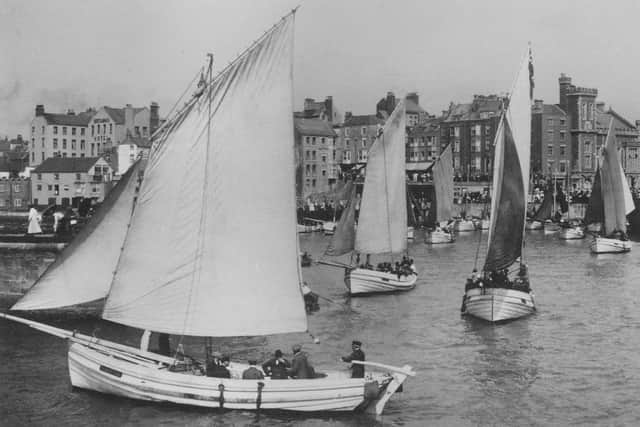Return of the ‘little ships’ that brought fish back to Bridlington


The traditional, sail-powered cobles, flat-bottomed and high-bowed, without keels and with hulls of overlapping planks, bobbed for generations on the North Sea, as they disappeared on the horizon and then returned several days later with their cargoes of mackerel.
It is more than half a century since they were working fishing boats, but enough of them have survived for them now to be making a comeback.
Advertisement
Hide AdAdvertisement
Hide AdOn Bridlington harbour, a fashion for restoring craft from long ago, and even building a few new ones, has fuelled an unexpected tourism spectacle.


The Sailing Coble Festival organised there three years ago and the only one of its kind, was conceived as a once-in-a-decade event, but when it returns in July it will be for its fourth outing.
“Quite a few things fall out of fashion, and by the time people start to appreciate them, they’ve all gone,” said Peter Godden, secretary of the Bridlington Sailing Coble Preservation Society.
“Luckily, cobles hadn’t faded away before the interest arose in starting to restore them.
Advertisement
Hide AdAdvertisement
Hide Ad“The people who came to our first festival were so enthusiastic that we’re now running it every year, and the interest keeps building.
“Some of the fishermen are now restoring cobles that they’ve slightly neglected, in order to take part. It’s tremendous.”
Decommissioning and the adoption of newer, more versatile vessels meant that the old fleets of cobles had been reduced to the point that few were now visible on the coast, said Paul Arro, of the preservation society.
The boats were based on a Viking longship design, thought to have been used to navigate rivers in the North of England.
Advertisement
Hide AdAdvertisement
Hide AdThe idea was adapted in Victorian times to make the boats suitable for being pulled on to the beach, with a removable rudder acting as the keel.
The first modern cobles were launched in the mid 19th century, and early postcards from the era show Bridlington’s promenades and harbour piers thronged with visitors queuing to take a sea trip on one.
It was a useful sideline for the fishermen, who packed their 40ft vessels with as many passengers as would fit inside, Mr Arro said.
Daily angling parties, in which skippers took rod and line fishermen out across Bridlington Bay and to off Flamborough Head, continued until the 1980s – long after the cobles had passed from industrial use. By then, they had been fitted with motors to augment their sail power.
Advertisement
Hide AdAdvertisement
Hide Ad“The motors are just to get them out of the harbour,” Mr Godden said. “But once you’re out, you hoist your sail and you just sail them. That’s the point of them – the little outboards are just there to bring them back if the wind conditions aren’t favourable.”
The Sailing Coble Festival on the weekend of July 27 and 28 will see the largest gathering of the traditional fishing craft in living memory.
They will be joined by a Paull shrimper, launched in 1918 and once part of a large fleet on the Humber. Organisers hope that a restored 1917 lifeboat will also take part.
The cobles will be moored near the Harbour Heritage Museum, with sailing throughout the weekend.